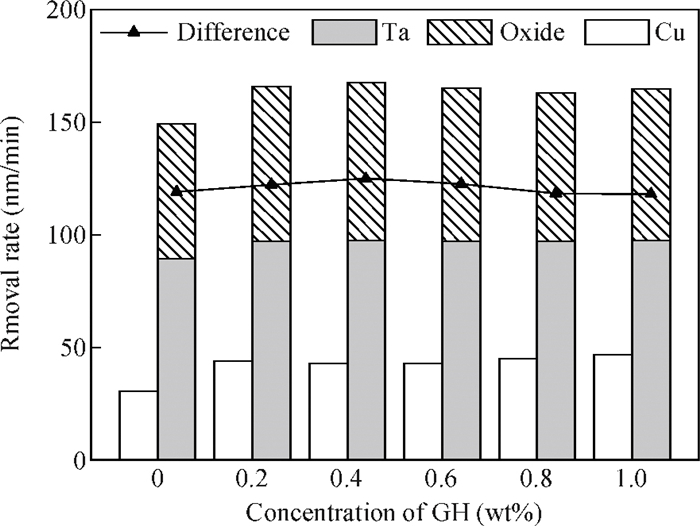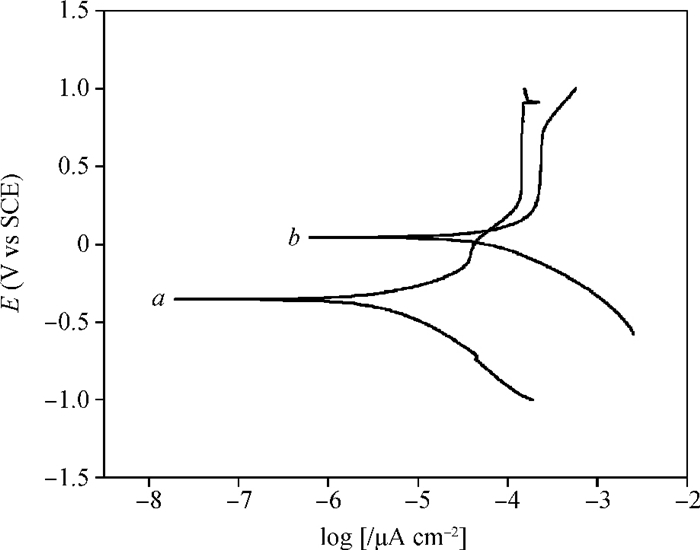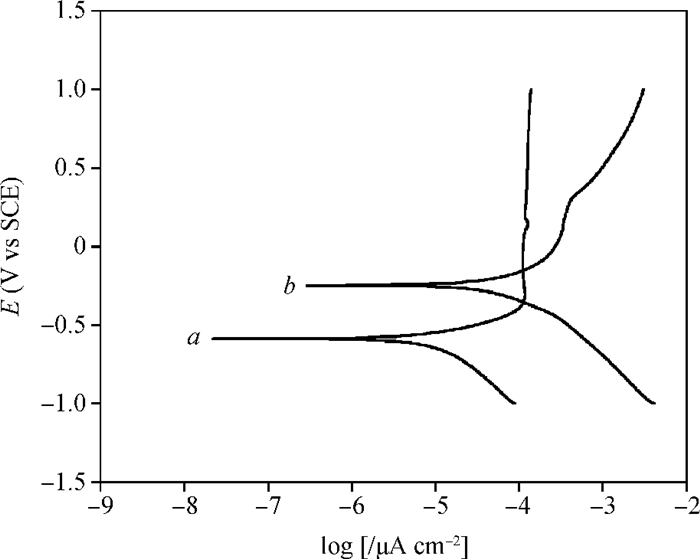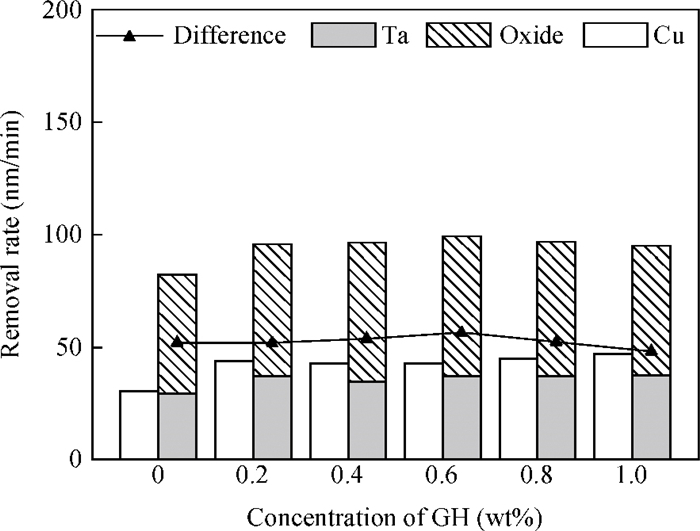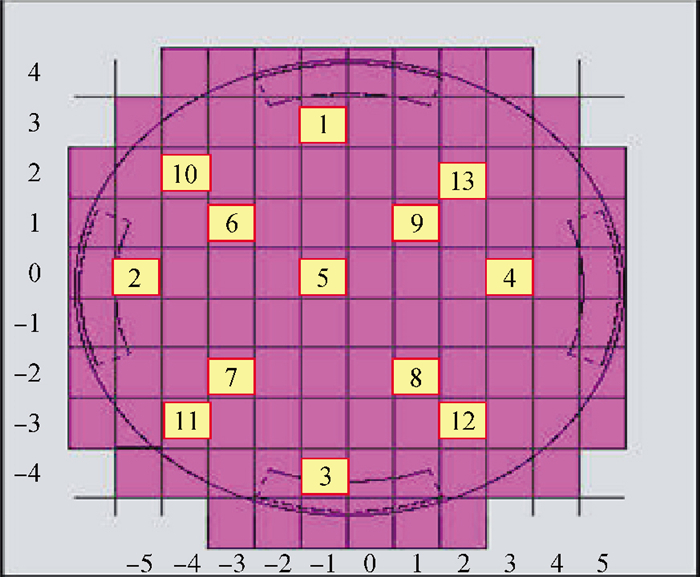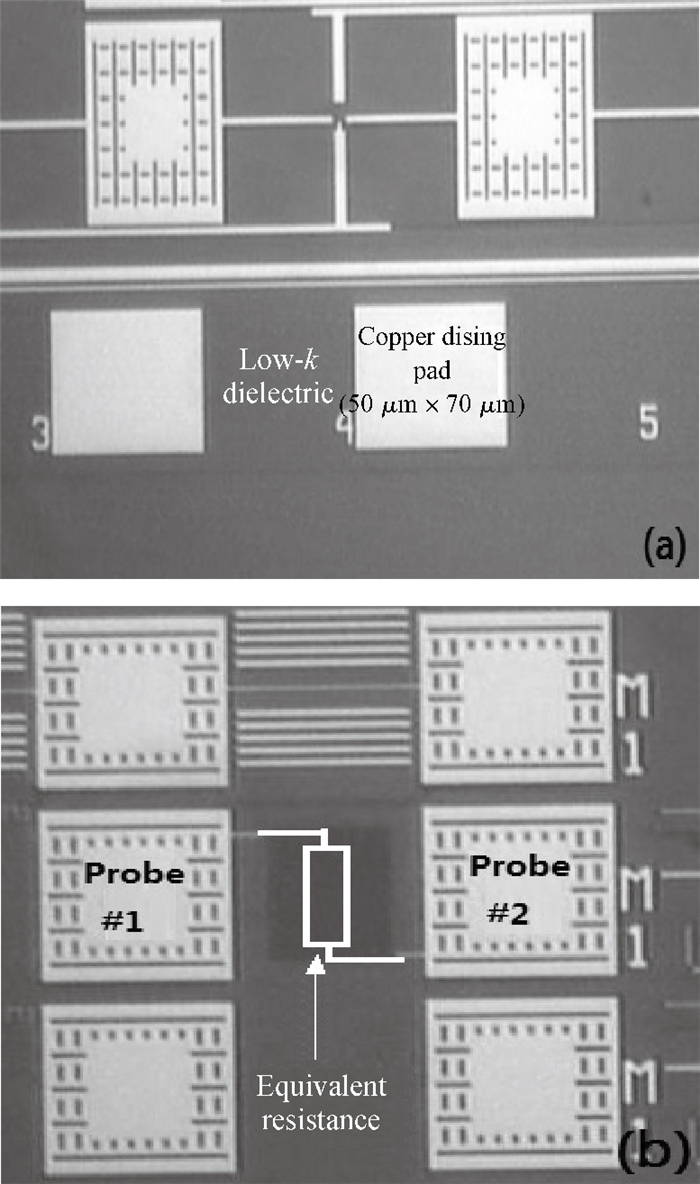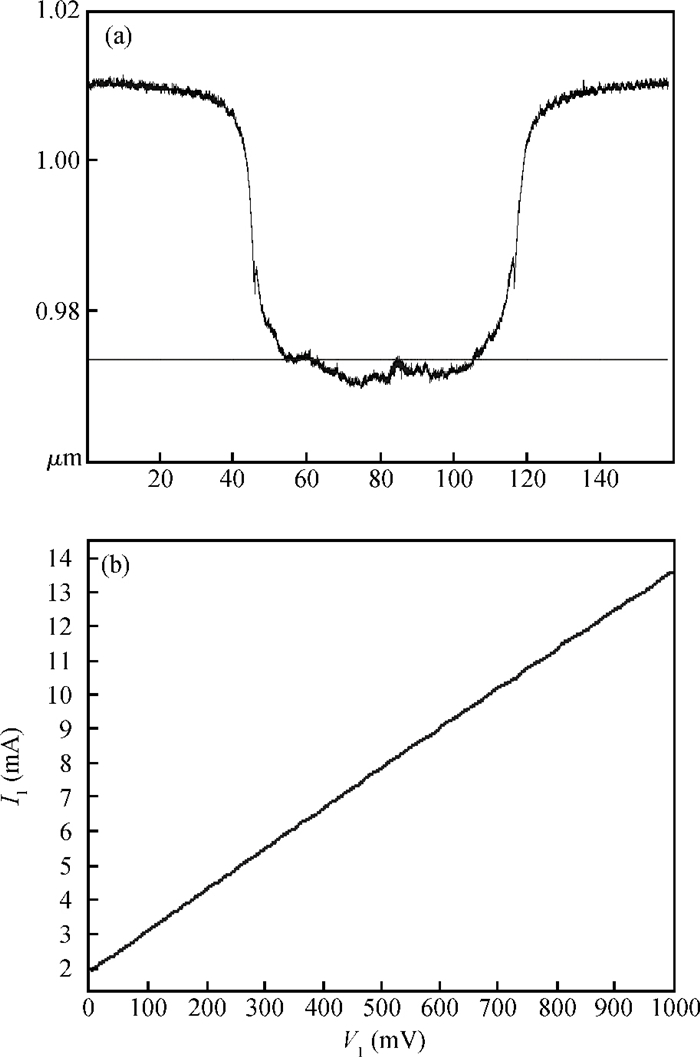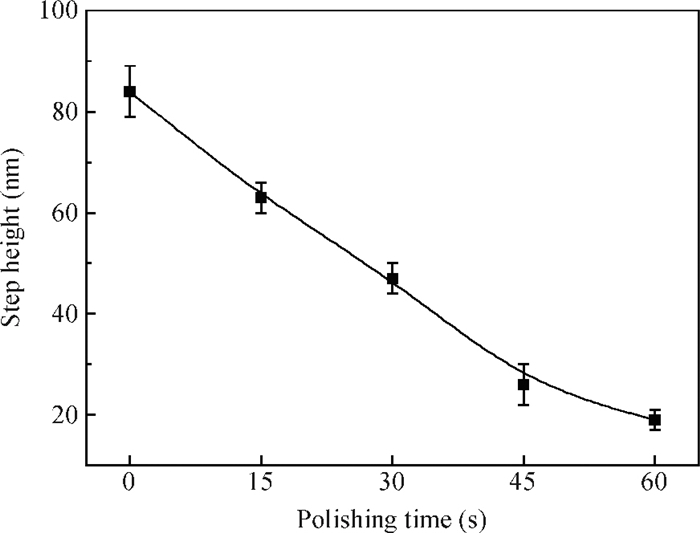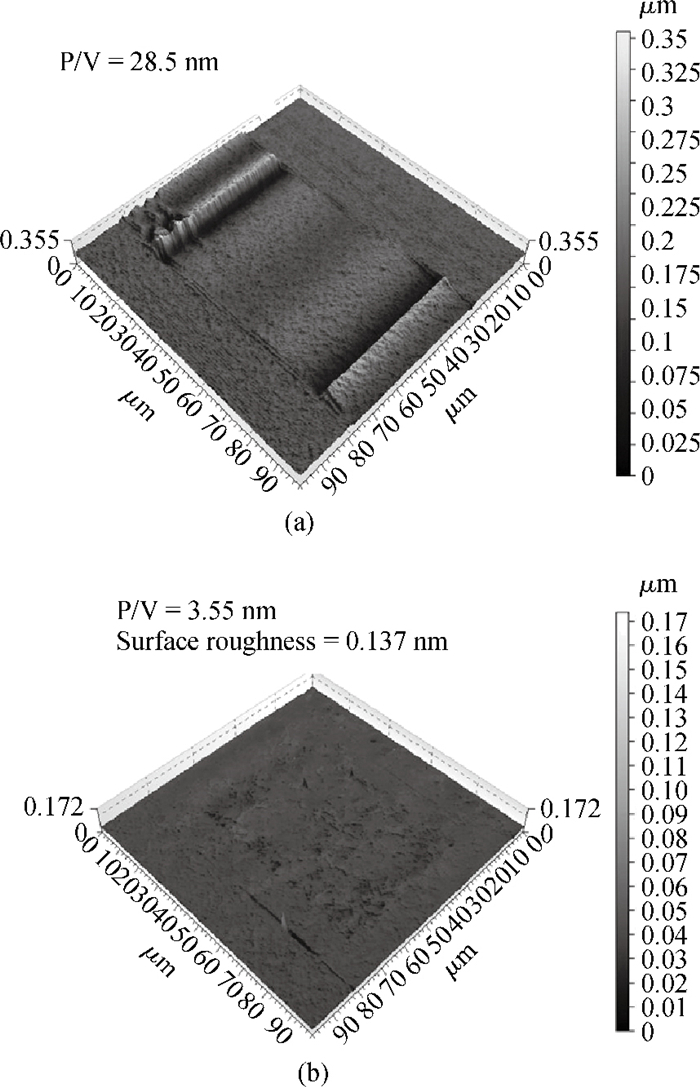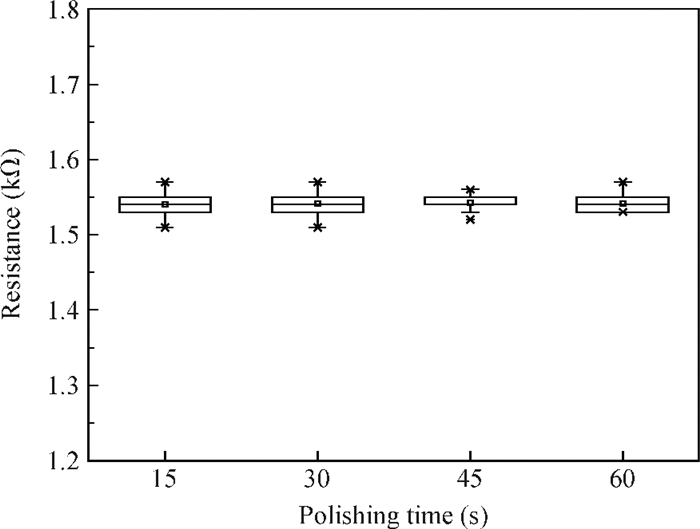| Citation: |
Hailong Li, Jin Kang, Yuling Liu, Chenwei Wang, Hong Liu, Jiaojiao Gao. Effect of guanidine hydrochloride on removal rate selectivity and wafer topography modification in barrier CMP[J]. Journal of Semiconductors, 2014, 35(3): 036002. doi: 10.1088/1674-4926/35/3/036002
****
H L Li, J Kang, Y L Liu, C W Wang, H Liu, J J Gao. Effect of guanidine hydrochloride on removal rate selectivity and wafer topography modification in barrier CMP[J]. J. Semicond., 2014, 35(3): 036002. doi: 10.1088/1674-4926/35/3/036002.
|
Effect of guanidine hydrochloride on removal rate selectivity and wafer topography modification in barrier CMP
DOI: 10.1088/1674-4926/35/3/036002
More Information
-
Abstract
We propose an alkaline barrier slurry containing guanidine hydrochloride (GH) and hydrogen peroxide. The slurry does not contain any corrosion inhibitors, such as benzotriazole (BTA). 3-inch samples of tantalum copper and oxide were polished to observe the removal rate. The effect of GH on removal rate selectivity along with hydrogen peroxide was investigated by comparing slurry containing GH and H2O2 with slurry containing only GH. Details about the tantalum polishing mechanism in an alkaline guanidine-based slurry and the electrochemical reactions are discussed. The results show that guanidine hydrochloride can increase the tantalum polishing rate and the selectivity of copper and barrier materials. The variation of the dishing and wire line resistance with the polishing time was measured. The dishing value after a 300 mm pattern wafer polishing suggests that the slurry has an effective performance in topography modification. The result obtained from the copper wire line resistance test reveals that the wire line in the trench has a low copper loss.-
Keywords:
- Guanidine hydrochloride,
- selectivity,
- dishing,
- barrier layer,
- CMP
-
References
[1] Li Y, Zhao J Z, Wu P, et al. Interaction between abrasive particles and films during chemical-mechanical polishing of copper and tantalum. Thin Solid Films, 2006, 497:321 doi: 10.1016/j.tsf.2005.09.189[2] Hernandez J, Wrschka P, Oehrlein G S. Surface chemistry studies of copper chemical mechanical planarization. J Electrochem Soc, 2001, 148:G389 doi: 10.1149/1.1377595[3] Kuo H H, Song J Y, Lin K C, et al. Novel CMP barrier slurry for integrated porous low-k technology of 45 nm node. International Interconnect Technology Conference, 2006:137 http://www.sciencedirect.com/science/article/pii/S0167931706005090[4] Zhao F, Economikos L, Tseng W T, et al. Evaluation of Cu CMP barrier slurries for ultra low-k dielectric film (k~2.4). International Conference on Planarization Technology, Dresden, Germany, 2007 https://www.vde-verlag.de/proceedings-en/563065024.html[5] Vijayakumar A, Du T, Sundaram K B, et al. Polishing mechanism of tantalum films by SiO2 particles. Microelectron Eng, 2003, 70:93 doi: 10.1016/S0167-9317(03)00398-8[6] Sulyma C M, Roy D. Electrochemical characterization of surface complexes formed on Cu and Ta in succinic acid based solutions used for chemical mechanical planarization. Appl Surf Sci, 2010, 256:2583 doi: 10.1016/j.apsusc.2009.10.108[7] Chen J C, Tsai W T. Chemical-mechanical polishing behavior of tantalum in slurries. Surface & Coatings Technology, 2004, 185:50 http://www.sciencedirect.com/science/article/pii/S025789720400012X[8] Wang C W, Gao J J, Tian J Y, et al. Chemical mechanical planarization of barrier layers by using a weakly alkaline slurry. Mcroelectron Eng, 2013, 108:71 doi: 10.1016/j.mee.2013.04.001[9] Luo Q, Cambell D R, Babu S V. Chemical-mechanical polishing of copper in alkaline media. Thin Solid Films, 1997, 311:177 doi: 10.1016/S0040-6090(97)00454-9[10] Nagendra P Y, Ramanathan S. Chemical mechanical planarization of copper in alkaline slurry with uric acid as inhibitor. Electrochimica Acta, 2007, 52:6353 doi: 10.1016/j.electacta.2007.04.044[11] Rock S E, Crain D J, Zheng J P, et al. Electrochemical investigation of the surface-modifying roles of guanidine carbonate in chemical mechanical planarization of tantalum. Mater Chem Phys, 2011, 129:1159 doi: 10.1016/j.matchemphys.2011.05.079[12] Rock S E, Crain D J, Pettit C M. Surface-complex films of guanidine on tantalum nitride electrochemically characterized for application in chemical mechanical planarization. Thin Solid Films, 2012, 520:2892 doi: 10.1016/j.tsf.2011.12.005[13] Zhang J, Li S, Carter P W. Chemical mechanical polishing of tantalum aqueous interfacial reactivity of tantalum and tantalum oxide. J Electrochem Soc, 2007, 154:H109 doi: 10.1149/1.2404899[14] Bailey P J, Pace S. The coordination chemistry of guanidines and guanidinates. Coordination Chemistry Reviews, 2001, 214:91 doi: 10.1016/S0010-8545(00)00389-1[15] Wang C W, Liu Y L, Niu X H, et al. An advanced alkaline slurry for barrier chemical mechanical polanarization on pattern wafers. Journal of Semiconductors, 2012, 33(4):046001 doi: 10.1088/1674-4926/33/4/046001 -
Proportional views





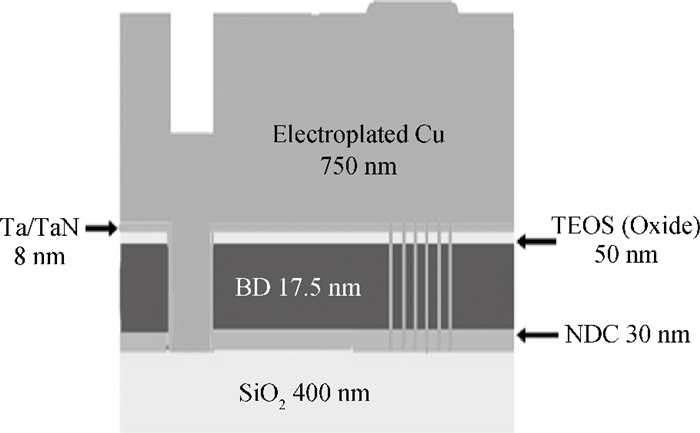
 DownLoad:
DownLoad:
